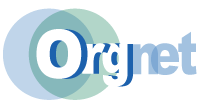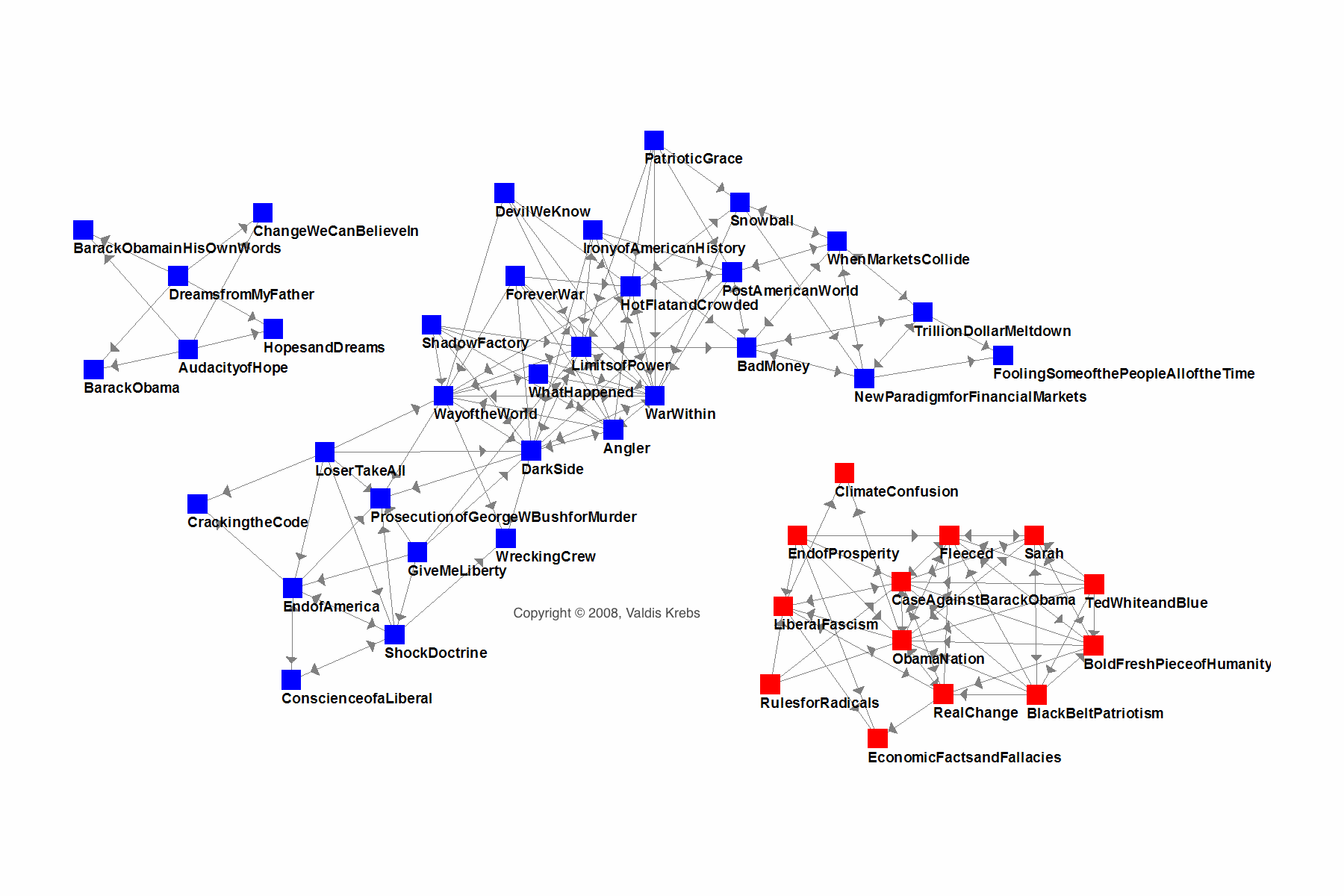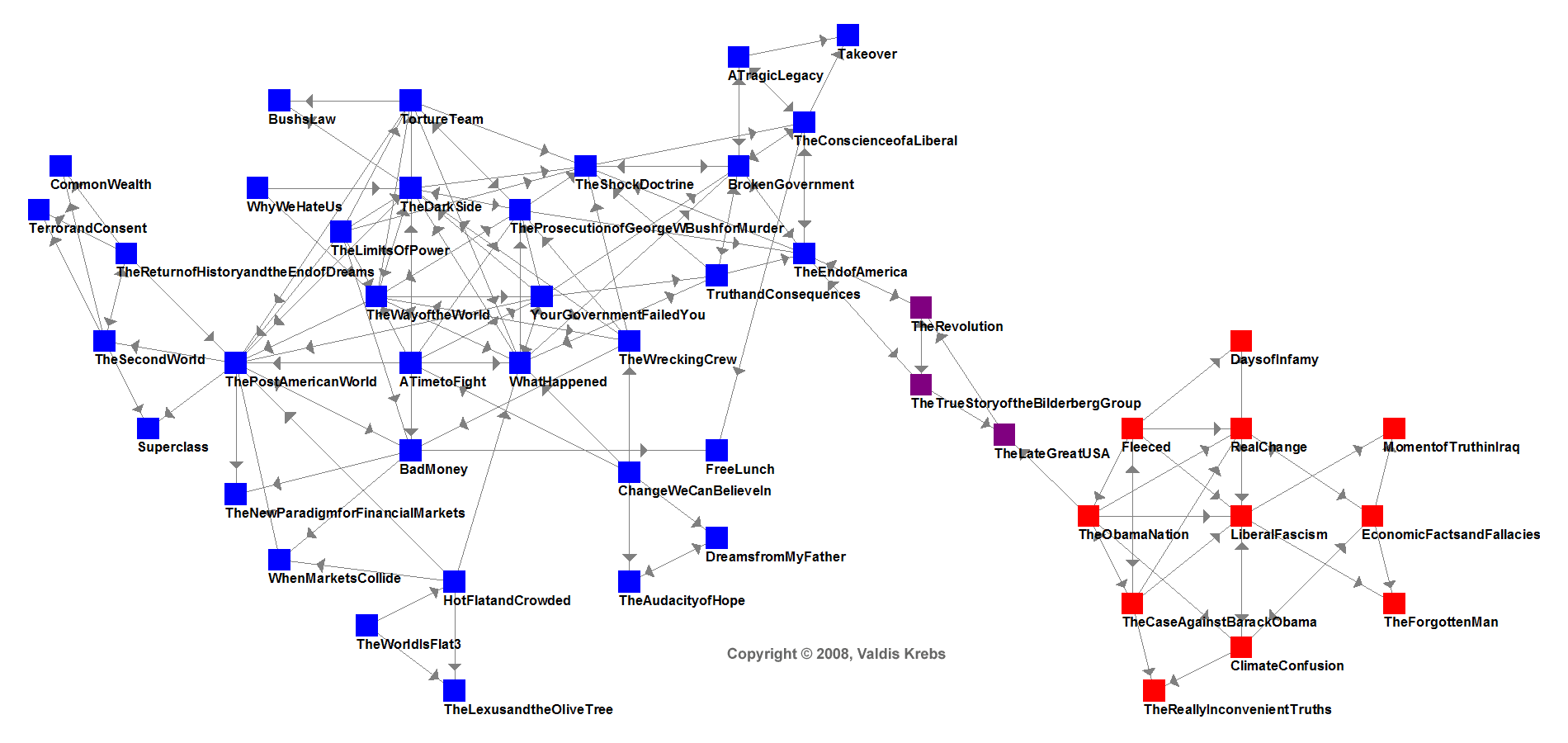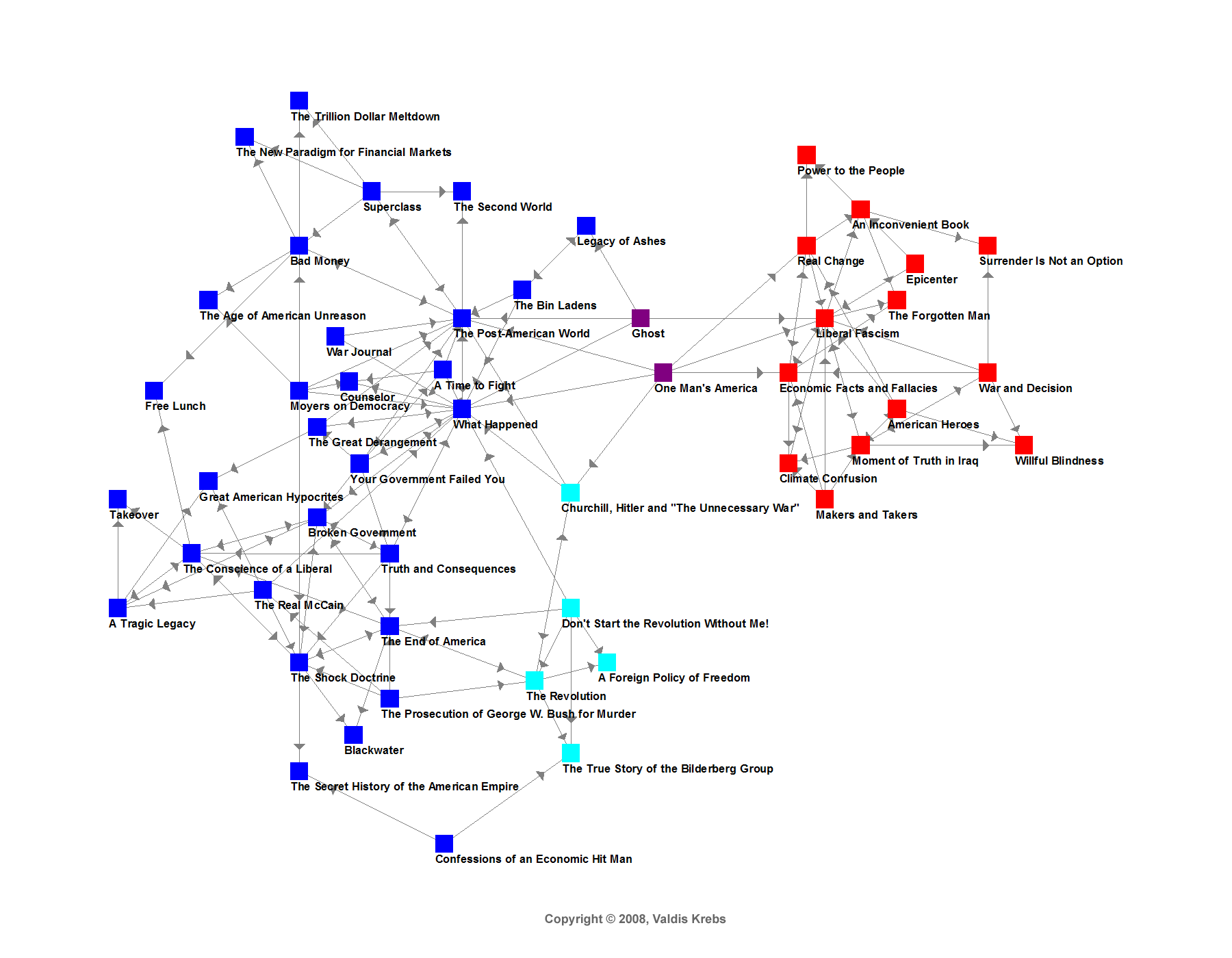 |

New Political Patterns
I have been doing a social network analysis of the purchase patterns of political books since 2003. A quick analysis of Amazon's sales data of political books gives us a highly similar analysis to that of political pollsters & pundits. We will review how the political book maps changed during 2008 as the U.S. presidential election approached.
October 2008
As both presidential campaigns sprint toward the finish line I took one more look at the political books purchased in October 2008 and the patterns they created. The arrows in the network map above show which books were "also bought" together. A-->B shows that customers who bought A, also bought B.
We see a few surprising patterns in the this pre-election map.
- unlike in previous maps, there are no bridging books between the red and blue clusters -- the two parties are totally separated! This reflects the immense polarization and animosity we currently see in campaign rallies on both sides.
- the "key book" of community organizers -- Rules for Radicals -- was being bought by the Right! It was being purchased along with several anti-Obama books. Is the Right trying to figure out why Obama's campaign, based on community organizing principals, is so successful?
- there are no books about McCain or Biden that made the Amazon cut-off for "most popular political books."
The book about Palin -- Sarah -- is the only popular book about the Republican team.- the Right focus on fewer books to get their message across. The map does not reflect volume of books sold.
It is possible that the Right buy more volume of fewer books.- those buying positive books about Obama, are not buying other political books.
Are they interested in the candidate, but not politics in general?
August 2008
During August we see several anti-Obama books appear. A new pro-Obama book, written by Barrack himself, is also in pre-release and being purchased on Amazon. Who is reading these books? The pro-Obama book -- Change We Can Believe In -- is solidly in the blue cluster. People that already support Obama are reading this positive book. The anti-Obama books -- The Obama Nation and The Case against Barack Obama are mostly being read by people who are already against Obama. One of the anti-Obama books is connected to one of the purple books -- The The Late Great USA. Could some undecided voters be reading this to make up their mind on Obama?

What is interesting is that no books on McCain, neith pro nor con, were in the best seller data. Do people already know him,
or are they not interested? Based on the pattern of connections between the books in the map above, the most influential political books at the end of the summer 2008 are: What Happened and The Post American World -- neither addresses the current election!
June 2008
After the major party candidates have been selected via the long primary season, we again probe the predictive patterns of partisan political polemics. Obama says we are one nation -- not divided into blue and red. McCain proclaims his purple "maverick" roots [purple is mix of blue and red]. What does the book data tell us?

Two books are connected if Amazon reports that they were frequently bought together by the same consumer. I don't arrange, nor color the nodes before feeding the also-bought data through the InFlow software. The software has an algorithm that arranges the layout of the nodes based on each node's connections, both direct and indirect. Once the software finds the emergent pattern, and any clusters, I review the books in those groups and then see whether they naturally cluster as blue, red or purple.
This diagram adds a new color -- light blue. Why? According to the Amazon sales figures, these books definitely cluster with the blues. But, looking at the titles and authors, they do not fit the common blue themes and supporters. Popular conservatives, independents and libertarians are all finding more connection with the blues than with the reds. The reds only have George Will bridging them to the rest of the US political world. We are seeing the split on the Right between the "old conservatives" and the "neo-cons" -- with the old conservatives more aligned with the progressives than with the neo-cons in the summer of 2008.
Previous Years
In our 2003 network analysis we saw just one book holding the red and blue clusters together. Ironically, that book was named "What Went Wrong. In 2004, several books held the two clusters together. The 2004 network analysis was published in the New York Times. Here is my original article on mapping networks of books.
More information is available abou